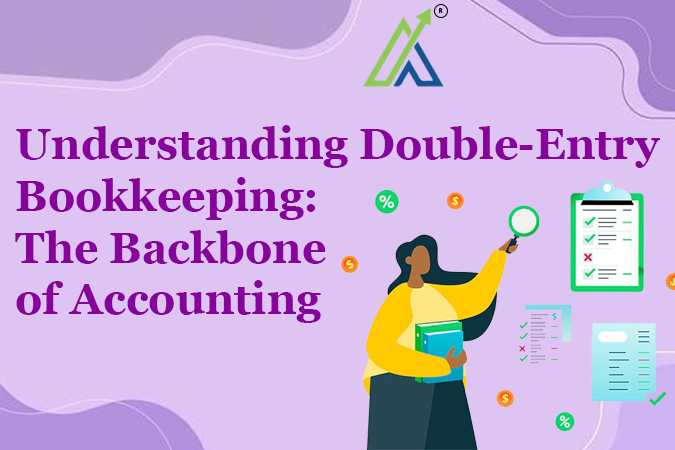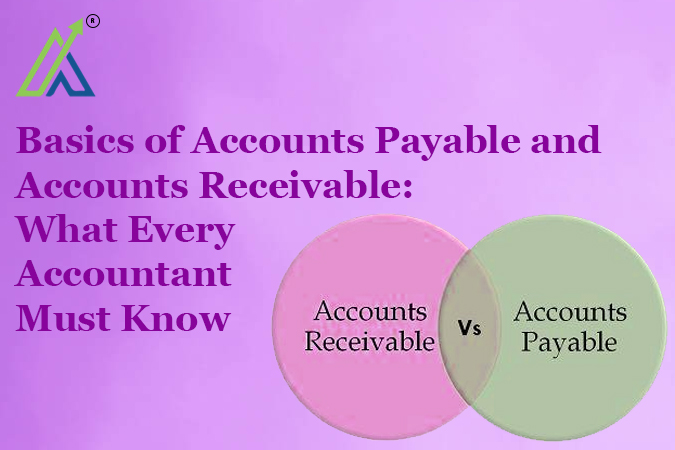Every transaction in the basic accounting tool known as double-entry bookkeeping influences at least two accounts—one debit and one credit. This approach guarantees that debits and credits are consistently balanced, therefore offering a thorough and accurate picture of the financial situation of a company. Key financial statements including balance sheets and income statements are prepared using it extensively, which provides insightful analysis of the financial situation of a firm. Banks and financial authorities favor double-entry accounting as it reduces mistakes and improves decision-making.
What is double-entry bookkeeping system?
Every transaction, including debits and credits, has a matching record in a double-entry bookkeeping system. Every transaction contains two components and impacts two ledger accounts, which is the foundation of the double-entry accounting system. Every company transaction involves two or more accounts under the double-entry accounting method.
An asset and a liability are two entries that result from a business borrowing money from a bank, for instance. This is due to the fact that it will raise the liabilities for the loan payable account as well as the assets for the cash balance account.
Double-Entry Principles
The following guidelines should be adhered to when documenting the double-entry accounting system:
- The credit is written on the right and the debit on the left.
- Every debit has to be matched with credit.
- The benefit is given by credit and received by debit.
When posting double-entry transactions in the bookkeeping process, there are some guidelines to follow. The guidelines for the various account kinds are as follows:
- For personal accounts: Credit the sender, debit the recipient
• For Real Account: Credit what goes out, debits what comes in.
• For Nominal Account: In nominal account, all the transactions related to expenses come under debit, and transactions that are related to the income come under credit.
Personal accounts are general ledger accounts pertaining to people such as individuals, organizations, and associations. General ledger accounts linked with assets and obligations outside of persons and people are the Real Accounts. The Nominal Accounts are general ledger accounts referring to all costs, earnings, profits and losses.
Advantages of Double-Entry System of Bookkeeping
Every company requires an accounting system. Although small businesses may use a single-entry accounting system, organizations with more than one employee or those with debt, inventory, or many accounts must have a double-entry bookkeeping system. The double-entry approach of bookkeeping has several benefits.
Comprehensive financial overview
Businesses with large transaction volumes should continue to use double-entry accounting. This is due to the fact that double-entry accounting aids in the preparation of important financial reports, such as the balance sheet and income statement. Since each transaction has a source and a destination, it provides comprehensive information about every transaction in contrast to the single-entry system.
Improved financial choice
Businesses may better manage their operations by keeping meticulous records thanks to the double-entry technique. Additionally, it demonstrates the financial strength and profitability of different corporate divisions, which aids in improving financial decision-making.
Minimizes bookkeeping mistakes
The double-entry accounting system’s balance sheet should have an equal amount of assets, liabilities, and equity. If they are not equal, the diary entries are incorrect and the book entries are incorrect as well. Therefore, accuracy in the final balance sheet and the books of accounts is guaranteed by the double-entry system. Additionally, accuracy helps accountants make fewer mistakes.
Preferred by financial regulators and banks
The double-entry method is more thorough and open. It makes it easier for companies to get finance and attract investors. The double-entry accounting method generates reports that give investors and banks a comprehensive and accurate view of the company’s financial situation. This bookkeeping technique is preferred by the Income Tax Department. The double-entry accounting technique is also accepted by the statutory authorities that oversee enterprises, including the RBI, SEBI, and the Registrar of Companies.
Journal Entries of Double-Entry System of Bookkeeping
A debit entry is made in one account and a credit entry is made in another for each transaction that is recorded in a journal. As a result, each transaction has to be documented in two accounts. The debit in the value-receiving account and the credit in the value-giving account are reflected in the transaction that is recorded in two accounts.
“Debit the receiver and credit the giver” is the primary rule for double-entry system entries. A transaction’s credit entry will appear on the right side of the general journal, while its debit entry will appear on the left. For the transactions to be balanced, the sum of the debits and credits must be equal.
An illustration of double-entry of transactions in a journal may be found in the following table
SI.No. | Date | Particulars | Debit (Dr.) | Credit (Cr.) |
1. | 3/7/2024 | Salary | 40,000 | 40,000 |
2. | 5/7/2024 | Electricity Bill | 5,000 | 5,000 |
3. | 9/7/2024 | Vehicle | 70,000 | 70,000 |
The table provides instances of double-entry accounting for several kinds of transactions. Every transaction in double-entry accounting impacts at least two accounts—a credit and a debit. For instance, ₹40,000 paid on July 3rd debited the Salary account and credited the Cash account. The ₹5,000 payment for the power bill credited Cash but debited the power Bill account on July 5. Purchasing a car valued ₹70,000 deducted the Vehicle account and credited the Bank account on July 9. Every transaction guarantees balanced debt and credit on both parties.
Questions to understand your ability
Q1.) In the double-entry bookkeeping system, what’s required for every single transaction?
a) Just one account should be affected
b) Two or more accounts must be affected
c) Only the cash account is involved
d) Only liabilities are impacted
Q2.) Which statement about the double-entry system is true?
a) Debits and credits must always go to separate accounts
b) The credit goes on the left side of the journal
c) Debits and credits can be unbalanced
d) Only asset accounts are affected
Q3.) Which of these is NOT a rule in double-entry accounting?
a) Debit goes on the left side
b) Every credit needs a matching debit
c) Credit is on the left side
d) Debit is what you “receive” and credit is what you “give”
Q4.) Why do financial regulators and banks prefer the double-entry system?
a) It’s faster and easier to do
b) It gives a clear, accurate view of a company’s finances
c) It only tracks cash transactions
d) It doesn’t need to be checked or balanced
Q5.) What happens when a company borrows money from the bank in double-entry accounting?
a) Liabilities go up, assets go down
b) Liabilities go up, assets go up
c) Only liabilities increase
d) Only assets are affected
Conclusion
To guarantee the integrity and accuracy of financial records in any company, the double-entry bookkeeping system is ultimately very vital. Recording every transaction as a credit and a debit gives a full picture of the financial condition of a business. The approach guarantees balanced assets, liabilities, and equity, therefore reducing mistakes and enhancing decision-making. Its use of consistent ideas also makes it favored by investors, financial institutions, and regulatory agencies. Maintaining open and consistent financial management depends on double-entry bookkeeping generally.
FAQ's
Every transaction hits two accounts. One gets debited, the other gets credited. That’s how you keep the books balanced.
Debits go on the left, credits go on the right. Don’t mess it up — each debit needs a matching credit. Simple as that.
Personal accounts (people, businesses), Real accounts (assets & liabilities), and Nominal accounts (expenses & incomes).
Liabilities (loan) go up, and assets (cash) go up too.
It’s legit and keeps things transparent. Investors, banks, and the tax man can see exactly what’s going on.
If debits and credits don’t match, you know something’s wrong. It’s a built-in check to avoid mistakes.
Every transaction gets a debit and a credit. Write it down right: debit the one receiving, credit the one giving.
It gives the full picture, stops mistakes, helps with smart decisions, and is a must if your business has debt, inventory, or complex transactions.




